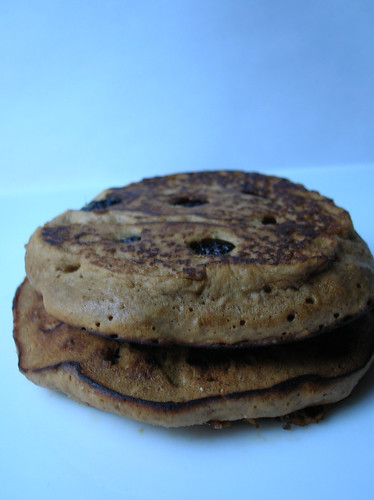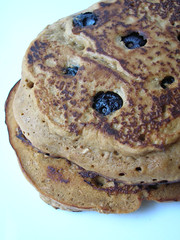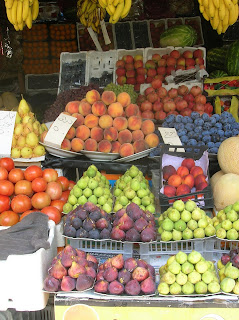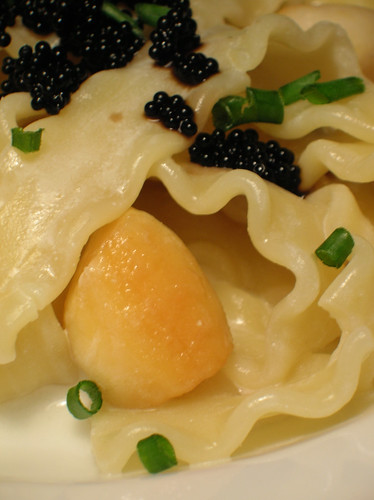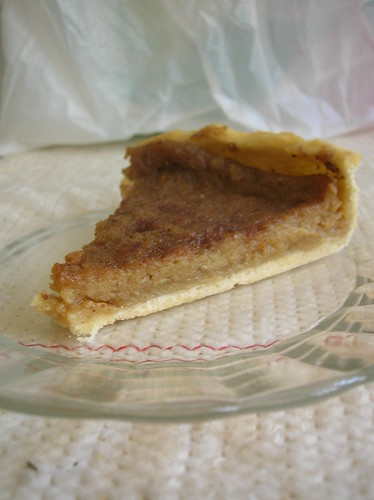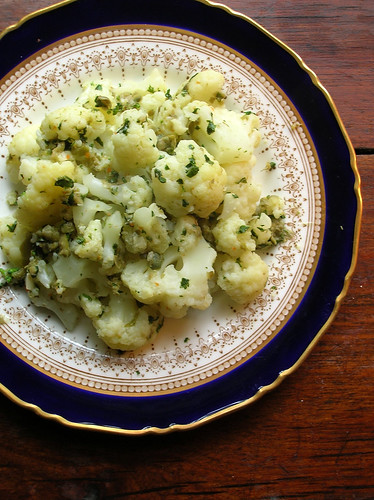
Paris, Britney, Anna Nicole. I’ll admit it, most of the time those first-name celebrities come up, I have no idea what people are talking about. Lindsay who? They did what? My pop-culture knowledge is as vapid as an US Weekly book review. I haven’t owned a television for four years and my mother knew about YouTube before I did. If it weren’t for some friends to keep me in check, my conversations would be relegated largely to 18th century Baghdad architecture, Richard Ford novels, and whatever makes it to NPR. But this is not a good thing either, for I have no desire to fall the way of pedantic snobbery and it can be terribly awkward when making small talk at parties or with cab drivers. Rather, I’m trying to balance the esoteric with that of popular appeal, to meet Arvo Part with JT, Grisham with Josephine Tey.
So when, on a snowy weekend visiting my mother, she suggested an Oscar party, I readily agreed in a spirit of mass-media indulgence. Besides, I’d seen Wolfgang Puck’s fancy-schmancy recipes that he serves for the Oscar dinner, and figured I could try one of those. My mom suggested a pizza, complemented with a tale of how, in the fifties, she and her high school friend used to buy a pizza kit that came with packages of yeast, flour, tomato sauce and cheese and make it on Friday nights. Small town life.
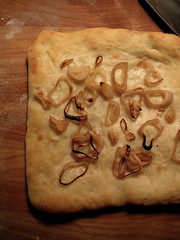
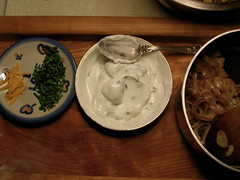
Our pizza was topped with sour cream and smoked salmon, which I realize is not quite the culinary kin of a Krispy Kreme doughnut or anything of low-brow inspiration. In retrospect, the recipe is more of an appetizer thing but we thoroughly enjoyed it as a main course in nice thick wedges. It was a great reminder of how easy homemade pizza dough is, and luckily we have some more which I rolled out and put in the freezer for a ready-in-8-minutes dinner. One of the best parts was the cauliflower salad I’ve been meaning to share here for a while now, nicely green with parsley and salty with olives and capers.
We even filled out Oscar ballots ourselves, and in some fluke, I actually won despite not having seen most of the films, so maybe there’s some hope for me after all.
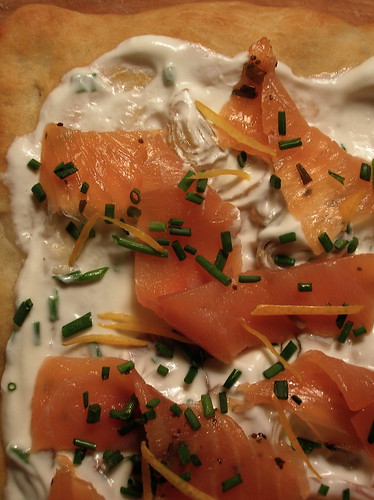
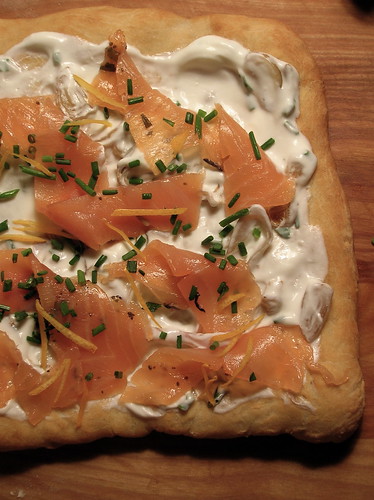
Smoked Salmon Pizza
- for the pizza dough:
1 pkg yeast
1 cup warm water (~110 F)
1 tsp sugar
1 tsp salt
3 cups flour
2 tbl olive oil
- for the topping:
olive oil
1 red onion or 2 medium shallots, halved and thinly sliced
1 cup sour cream
2 tsp minced dill
1 tsp lemon juice plus lemon zest for serving
8 oz smoked salmon
chopped chives
1. In a small bowl, combine the yeast, sugar, and 1/4 cup of the warm water. Let sit until foamy, meanwhile, combine the flour and salt in a medium bowl. Add the yeast mixture to the flour along with the rest of the water and the olive oil. Stir with a wooden spoon or in a mixer with a dough hook for several minutes until the dough comes together.
2. Turn the dough out onto a lightly floured work surface and knead using the heel of your hand about ten times, or until the dough is smooth and elastic. Lightly rub a bowl with some oilve oil and put the dough in it, turning to coat. Cover the bowl with a towel and leave in a warm place to rise for 30 minutes.
3. Preheat the oven to 500 F. If you have a pizza peel, place in the oven to preheat, otherwise you can use a greased heavy-duty baking sheet. Divide the dough into four portions. Gently stretch each dough piece into a small pizza, either pressing it out with your fingers or with a rolling pin. Lightly brush the dough with some olive oil and sprinkle the onion slices over top. Place the dough onto the prepared baking sheet or peel and bake for 8 minutes, or until risen and golden.
4. While the pizzas are baking, stir together the sour cream, lemon juice, and dill. When the pizzas come out of the oven, let them cool a couple minutes, then spread with some of the sour cream mixture. Arrange some of the smoked salmon decoratively overtop, and sprinkle with chives and lemon zest. Cut pizzas into wedges or squares and serve.
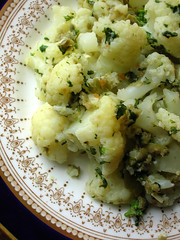
Cauliflower Salad with Caper Dressing
1 head cauliflower
2 tbl capers
1 handful flatleaf parsley, minced
4-5 green olives, chopped
pinch red pepper
olive oil
Place the capers, parsley, olives and red pepper in a mortar and pestle. I usually put a bit of the brine from the capers in there too. Pound the mixture with the pestle until well combined, if it seems a bit dry you can add a bit of olive oil. This can also be done in a food processor, but the mortar and pestle yields a better texture.
Seperate the cauliflower into florets and cook in boiling water until tender. Drain the
cauliflower and toss with the caper dressing, stirring to coat.
You could also add some little chopped up cornichons or hard-boiled egg to this.








